Serendip is an independent site partnering with faculty at multiple colleges and universities around the world. Happy exploring!
(In)visibility with Sex, Gender, and (Dis)ability: Correcting Images

"I think being invisible is the only superpower that doesn't have a downside."
Someone said this to me as I was working on this webpaper, trying to construct an argument about queer invisibility and and the invisibilities of disabilities. My thought process crashed to a halt--she hadn't even seen my brainstorming.
"What makes you say that?"
She told me that flight can lead to motion sickness, mind reading can be overwhelming, super strength can cause someone to break another person's bones when simply trying to give them a hug. As far as this goes, I can see how invisibility doesn't have any downfalls.
Except for the fact that you don't exist.
Initial photo of a butch woman:
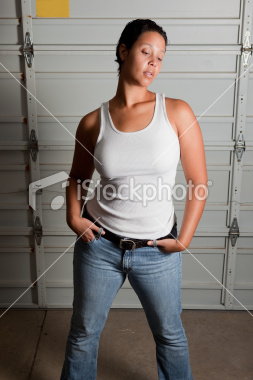
Through a heterosexist lens, women cannot be butch. They must be feminine women or masculine men--nothing else is allowed. So the initial photo may be corrected to:
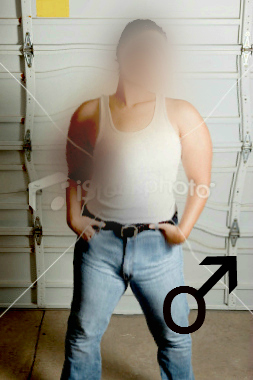
Her face is now blurred out, her breasts are unidentifiable, her waistline is brought up so it doesn't look like she has hips, her shoulders are made broader, and her legs are made broader. This is a "better" definition of a man.
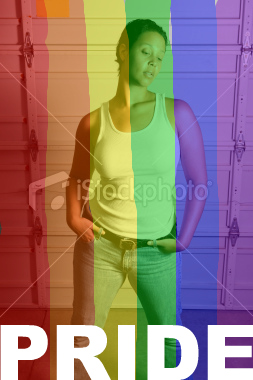
Through an ableist lens, this is not a man on a laptop:
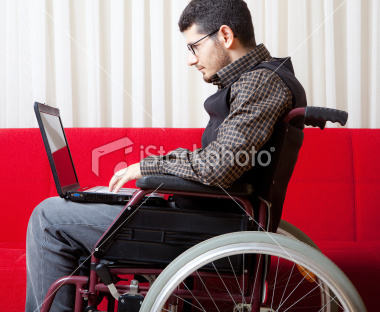
It's just a picture of a wheelchair.
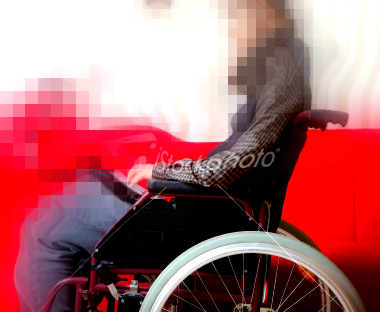
Maybe this person does not want to be defined only by their disability. Maybe they want to exist outside of their disability (go figure!). Maybe we should be seeing them as this:
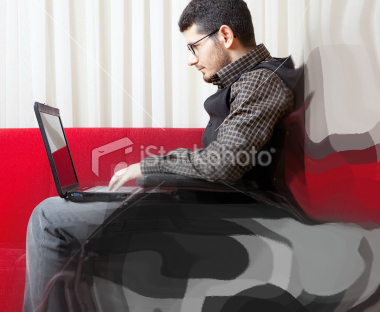
What do you see when you look at this?
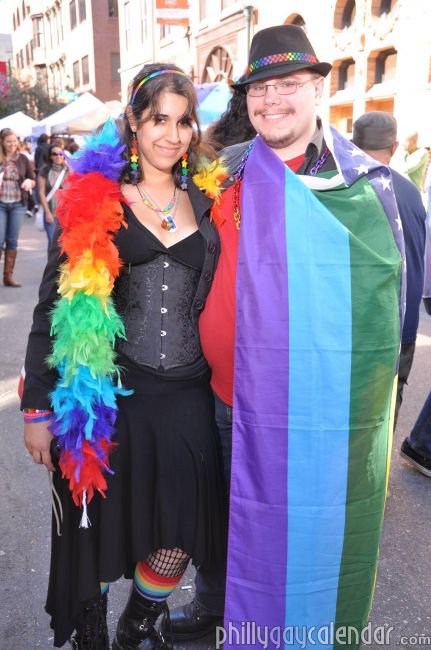
A feminine woman and a masculine man standing together? Well even if they're wearing rainbows, they must be straight. Look! She's wearing a skirt! Look! He has facial hair! This image must be corrected to:
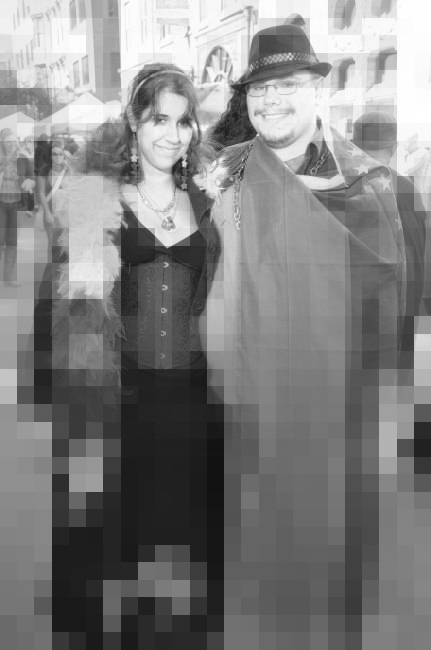 No more rainbows, barely even bodies are left, just heads and smiles from a feminine woman and a masculine man.
No more rainbows, barely even bodies are left, just heads and smiles from a feminine woman and a masculine man.
When in reality, it may be something completely different:
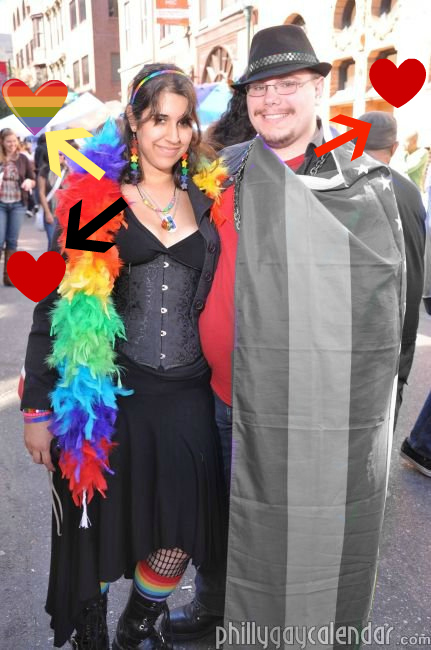
This may indeed be a picture of a couple, but a picture of a straight man and a queer woman.
In the following picture, the rainbow isn't supposed to be taken as a symbol of the woman's sexuality--after all, it's JUST an umbrella.
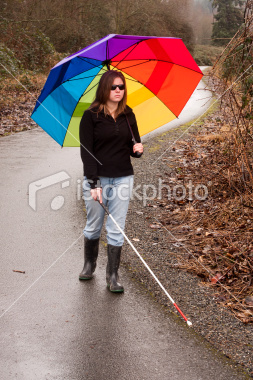
So this image finds itself being corrected so that the focus is only on the disability:
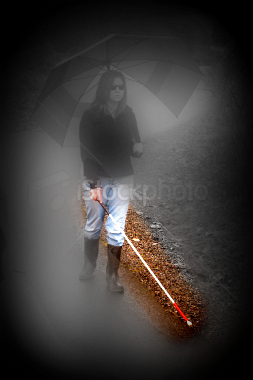
When maybe, the focus is supposed to be on an expression of sexuality and the disability should be disregarded in order to see the person as a person. Maybe it should be seen as:
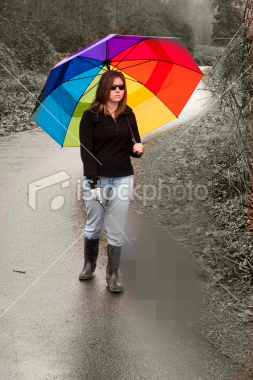
People often become invisible due to the way they are visually represented. Disability may be the only thing that's noticed. Queerness might be ignored in exchange for heterosexual representations. On the flip side, people with invisible disabilities get mistaken for able-bodied people, sometimes to the extent where they need to be physically put in wheelchairs in order to gain the help they need. Femme lesbians get mistaken for heterosexual women. Masculine gay men get mistaken for heterosexual men.
How can we get noticed for who we really are without having to hide the visual clues that give us away?
Well for starters, you could ask.
Ask, and maybe let others know that you genuinely notice them.
Photo credits:
All photos except for the picture of me are from istockphoto.com
Picture of me and boyfriend taken by a photographer from phillygaycalendar.com
All photos have image descriptions for those with text to speech readers or a text-only browser.
**EDIT: some of my pictures appear to have disappeared. re-adding.



Comments
desiring visibility?
Ivan E. Coyote is a powerful storyteller and the tribute "to all the kick-ass, beautiful fierce femmes out there" is such an emotionally rich way to conclude your web event. (However, that clip actually didn't end it for me--I watched many more of the videos that appeared in the last frame of the clip you embedded. Thank you for making my exploration of Ivan E. Coyote's oeuvre so accessible. I also appreciated your inclusion of text descriptions for those with "text to speech readers or a text-only browser," but wish that you could guide me to such a browser so I can read your descriptions as well.) Your series of morphed images successfully illustrate (for this sighted reader) how visual cues can be misinterpreted by viewers as they create overly simplified and normalized identities for others, as well as manipulated by producers/performers to complicate identities and reveal hidden dimensions. These "corrected" images also highlight the hierarchical relationships among sex, gender, and disability that can exist in the minds of viewers, as well as the use of context in translating symbols such as rainbows in the umbrella, in the Phillygaycalendar, and in the overlay on photo of the butch woman. I was also intrigued by how you play with "focus" both as an organizing word/concept in your analysis and as a disorganizing feature in your "corrected" images.
I'd like to follow up on your question, "How can we get noticed for who we really are without having to hide the visual clues that give us away?" Are we always trying to be noticed (by everyone in all situations) as sexed and gendered bodies with sexual desires? It seems like a lot of work to constantly produce visual cues about our complicated, fluid identities. I also hope you could say more to those of us who don't want to judge others on the visual cues they present and we see? You state, "Well for starters, you could ask." If one the images you present was a still shot in a video clip, how do you imagine the scene might play out? What could one ask? And what relationship would one need to have with the person in the image to ask that question?
More people need to be aware of the potential errors and the erasures of identity that can happen by automatically linking sex to gender to sexual desire. I wonder how Young-Jordan's analysis might contribute to this discussion.
...and a final question connecting back with Varenne, are superpowers inevitably disabling?
Maria, I LOVED that video on
Maria, I LOVED that video on the end. LOVED it. Thanks for sharing!
Others you should check out
Others you should check out that had a similar effect on me:
Hair Today part 1: http://www.youtube.com/watch?v=0c_F11npv_o
part 2: http://www.youtube.com/watch?v=18yoVKI9C_w
and a thanks to jfwright, who introduced me to these videos!